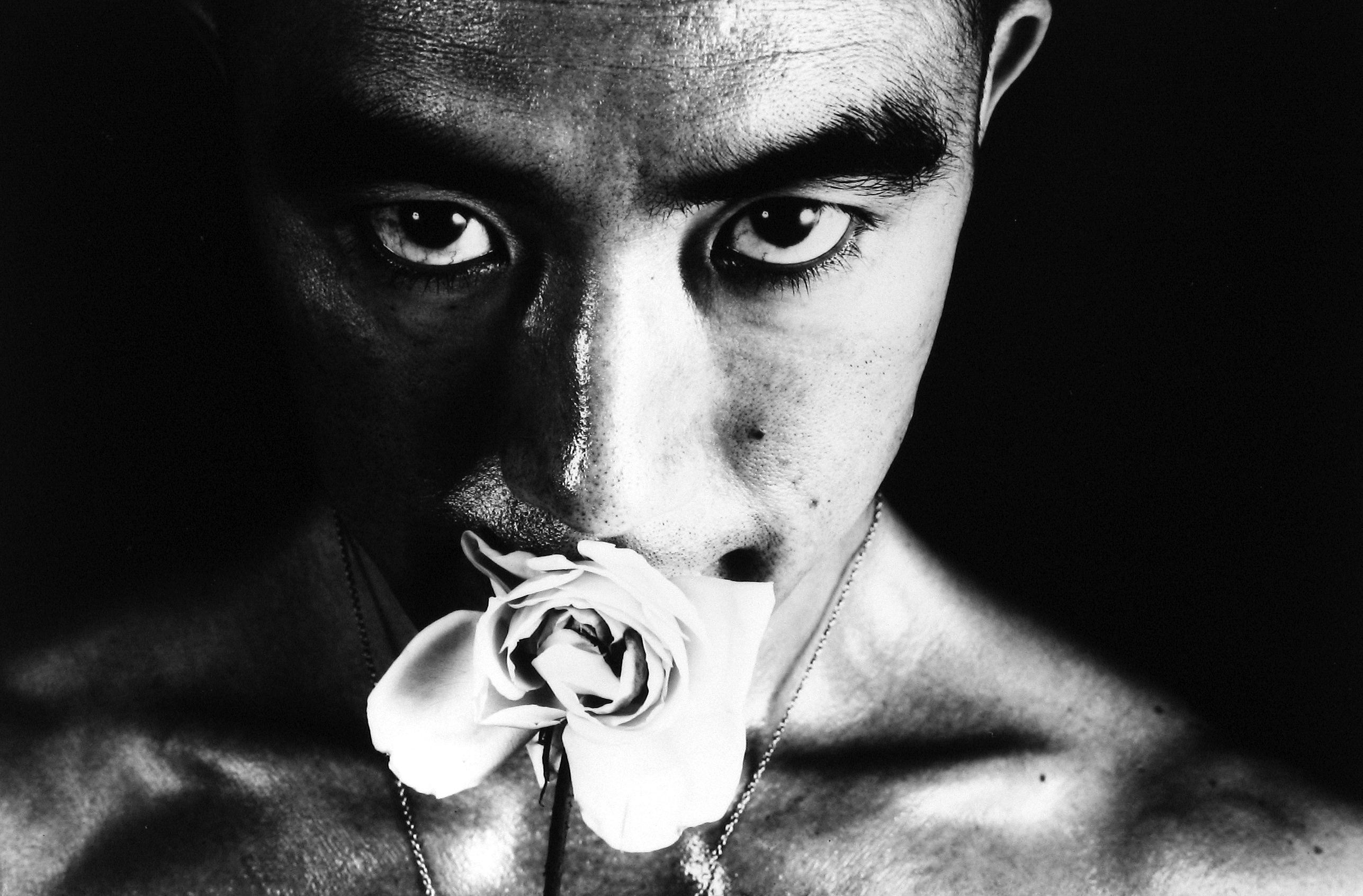
Ordeal by Roses (Barakei) #32, 1961
Eikoh Hosoe
Eikoh Hosoe (b. 1933) was born in Yamagata Prefecture. In 1951, he won the top prize for students at the Fujifilm-sponsored “Fuji Photo Contest.” In 1952, after entering the Tokyo Junior College of Photography (currently Tokyo Polytechnic University), he formed a connection with the renowned artist Ei-Q, who organized Demokrato an avant-garde artist’s group. Through this relationship, Hosoe cemented his individualistic way of thinking, which challenged common conceptions of art. He graduated in 1954, and in 1956 held his first solo exhibition, “An American Girl in Tokyo.” In 1957, he participated in the exhibit “The Eyes of Ten,” organized by photography critic Tatsuo Fukushima. This exhibit led Hosoe to meet photographers Kikuji Kawada, Akira Sato, Akira Tanno, Shomei Tomatsu and Ikko Narahara, and together they formed the independent photo agencyVIVO. This agency positioned itself against the then-popular “Realism Photography Movement,” and instead developed more “personal” or “subjective” modes of photographic expression.
At the beginning of Hosoe’s career in the 1950s, he produced many important works depicting people, and he won the Japan Photo Critics Association Newcomer’s Award for his 1960 solo exhibition “Man and Woman.” His 1963 work Barakei (killed by roses), featuring author Yukio Mishima as a model, elicited a huge response, and Hosoe was eventually recognized with the Japan Photo Critics Association Artist Award. His 1970 work Kamaitachi (A weasel’s slash), which was produced in a farming village in Akita Prefecture with the butoh dancer Tatsumi Hijikata, won The Ministry of Education, Science and Culture’s Arts Encouragement Prize. Hosoe has an esteemed reputation both at home and abroad: among his awards include The Medal with Purple Ribbon (1998), The Royal Photographic Society (England) Special 150th Anniversary Medal Award (2003), The Order of the Rising Sun (2007), the Mainichi Art Award (2008) and a designation as a Person of Cultural Merit by the Ministry of Education in 2010.
Exhibitions